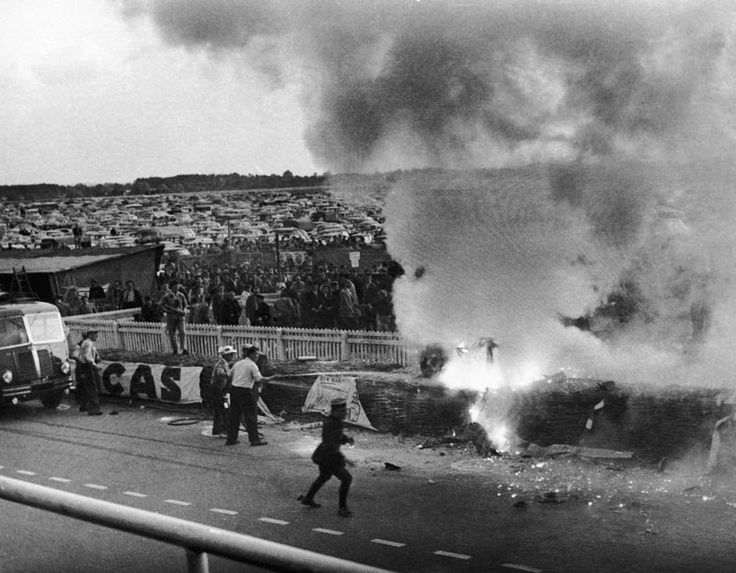Picture this: Le Mans, 1955. Sleek, roaring machines, dashing drivers, and crowds packed tighter than sardines, all buzzing with excitement for the world’s greatest endurance race. But in just one horrifying second, the race turned into a nightmare—a flying Mercedes, a fiery explosion, and a death toll that shocked the world.
This wasn’t just a crash. This was the disaster that nearly erased Le Mans from history—and forced racing to grow up. Buckle up, because this story is wild, tragic, and full of insane twists.
The Race Before the Storm
The 1955 24 Hours of Le Mans was shaping up to be a battle of the titans:
- Jaguar’s D-Type – British engineering at its sexiest.
- Mercedes-Benz 300 SLR – A German beast with a rocket engine (okay, not really, but it was stupid fast).
- Ferrari, Aston Martin, and more – All gunning for glory.
The crowd? A record-breaking 250,000+ fans, crammed into every inch of the track. Safety regulations? Basically nonexistent. This was the Wild West of racing, where danger was part of the thrill.
The Crash: A Perfect Storm of Chaos
Lap 35. Mike Hawthorn (Jaguar) makes a sudden pit stop, slamming the brakes. Lance Macklin (Austin-Healey) swerves to avoid him—BAM! Pierre Levegh’s Mercedes gets airborne like a scene from Mad Max.
The car smashes into the barrier at 150+ mph, disintegrating into a deadly hailstorm of metal and fire. The engine block flies into the crowd like a cannonball, while the hood slices through spectators like a guillotine.
Levegh dies instantly. 83 spectators are killed. Over 120 injured. The track? A war zone.
The Immediate Aftermath: Panic & Withdrawals
- Mercedes-Benz nopes out immediately. They quit racing for the next 30 years. (Talk about holding a grudge.)
- Switzerland bans motorsport entirely—a ban that’s still in place today. (No F1 at the Swiss GP, folks.)
- France, Germany, and Spain temporarily halt races. The world is in shock.
Meanwhile, the race organizers do the unthinkable—they keep going. Yep, the race wasn’t even red-flagged until hours later. (1950s priorities: “We came here to race, dang it!”)
How This Disaster Changed Racing Forever
This wasn’t just a tragedy—it was the wake-up call motorsport needed. Here’s what changed:
Stronger barriers (No more flying engine blocks, please.)
Safer grandstands (Spectators like being alive, it turns out.)
Better driver protection (Seatbelts! Fireproof suits! Who knew?)
Strict track designs (No more “let’s just put fans right next to death machines.”)
Le Mans’ Redemption: The Race That Refused to Die
Despite calls to shut it down forever, Le Mans returned in 1956—with actual safety rules. The disaster forced racing to evolve, leading to the (relatively) safer sport we know today.
Final Thought: A Dark Legacy
The 1955 Le Mans disaster was racing’s “hold my beer” moment of tragedy—a brutal lesson that speed without safety is just organized chaos.
So next time you watch a race and think “Wow, these safety measures are overkill,” remember: 83 people had to die for them to exist.
R.I.P. to the victims—and long live safer racing.
